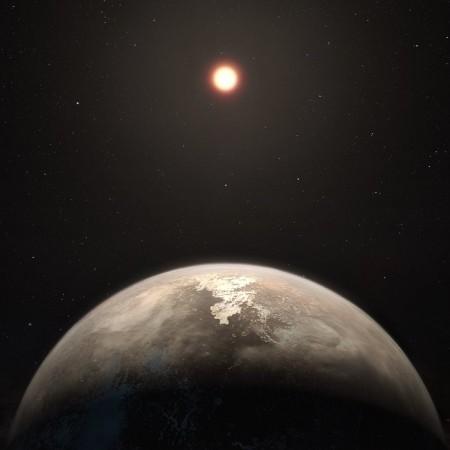Ross128b is one of Earth's nearest exoplanets— planet in a different star system — and its makeup, size, and climate could mean that it is perfectly suited for life. It is also only 11 light years from the Earth.
The exoplanet was first discovered last year and has since intrigued astrobiologists around the world. First, it was found to be in its star's Goldilocks Zone — a point that is neither too hot nor too cold for liquid water to exist. While it was actually quite close to its host star — Ross 128 — making an orbit just under 10 days, the star is a small red dwarf, so its habitable zone is also quite small, unlike the Sun's, notes a report by Space.com.
Also, 128b is only about 1.3 times the size of Earth, so it is likely a rocky planet. "There is still much we don't know about its potential geologic activity, we were able to strengthen the argument that it's a temperate planet that could potentially have liquid water on its surface," said lead author Diogo Souto in a statement.
For the new study, researchers focussed on Ross 128, the red dwarf star, using Sloan Digital Sky Survey's Apache Point Observatory Galactic Evolution Experiment (APOGEE), in New Mexico.
APOGEE was used to measure near-infrared light, where Ross 128 is brightest, said study co-author Johanna Teske, it reportedly allowed researchers to address some fundamental questions about Ross 128b's likeness to Earth.
Data from APOGEE uncovered the sheer quantity of certain types of elements in Ross 128. This could give a fair idea of what the planets are made up of, notes the report. Star and their companion planets all have similar compositions because they are all made of the same cloud of material during star birth. Researchers were looking for carbon, oxygen, magnesium and iron in the star so that they could make out if 128b was rich in these elements.
Through this study, researchers were able to determine the temperatures near the surface of the star and found it to be around 3,000 degrees Celsius. Using this information, they added another variable - 128b's radius and orbital distance, to calculate just how much energy the exoplanet receives and using this information, they figured out how hot the planet is likely to be, notes the report.

Ross 128b is more likely than not to have an "equilibrium temperature" of 21 degrees C- that is a pleasant temperature that is neither too hot nor too cold for humans. Having said that, this result should not be taken at face value, say the researchers as a planet's surface temperature is a result of several other variables that are not limited to just the distance from a star.
The composition of a plant's atmosphere for example, is an important factor in regulating surface temperatures and scientists know little about 128b's atmosphere as of now.
Axial tilt is another important factor in regulating a planet's temperature.














